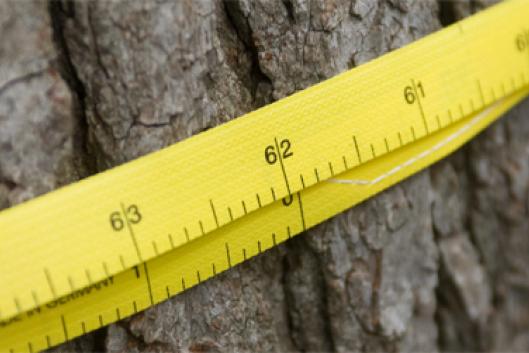Myth: Sustainable Forest Management will reduce forest emissions and bring sustainable development.
The UN climate negotiations included the concept of ‘Sustainable Forest Management’ (SFM) in the agreements of 2010 in Cancun, Mexico, under a concept called REDD+, “Reducing Emissions from Deforestation and Forest Degradation, the conservation, sustainable management of forests and enhancement of forest carbon stocks in developing countries” (1). Under REDD+, SFM is promoted as a way of achieving emissions reductions. The reality is that SFM is the myth that allows destructive and often illegal logging to continue with impunity.
Everyone these days practices ‘sustainable forest management’. Even Malaysian company Rimbunan Hijau, one of the world’s most destructive logging companies (2), claims on its website to practice ‘sustainable forest management’ and to “keep Malaysia green” with their “investment in tree plantations” (3). Companies keep pushing the idea that monoculture plantations can be ‘sustainable’. Rimbunan Hijau even claims to be “planting forests”. The UN itself also considers industrial tree plantations as forests. This is, simply put, a flagrant error. Plantations are not forests. Forests contain diverse webs of life and plantations are void of biodiversity and with polluted soils and water streams. This endangers Indigenous and forest dependent people and exacerbates climate change.
As Patrick Alley of the NGO Global Witness points out in a recent talk, ‘sustainable forest management’ is a “nasty little euphemism” (4). The logging industry has managed to portray itself as an almost philanthropic venture, bringing jobs and development. Alley explains that, “You can divide the industrial logging industry in the tropics into two categories: The criminal and the legitimate. The criminal is criminal. And the legitimate is much the same, but with better PR.”
The logging industry has had plenty of help in pulling off this perfect crime, as Alley describes it. Continued logging in the tropics has even been encouraged with taxpayers’ money. In the nine years up to June 2011, the World Bank poured US$4.1 billion into the forestry sector. A 2013 review by the Independent Evaluation Group found that overall these projects have failed to address poverty or to benefit local communities (5).
Predictably, the Bank’s management rejected the criticism and the money from the World Bank keeps coming (6). In August 2013, the Bank announced that it was handing out US$31.83 million for participatory ‘sustainable forest management’ in Laos (7). This is a country that has seen its forests devastated by illegal logging, which shows no signs of stopping before the last forest has been felled (8). Yet, rather than supporting initiatives to round up the criminals running the illegal logging, the World Bank is pouring in yet more money into little more than greenwash for continued logging.
A film on industrial logging in the Democratic Republic of Congo made by Global Witness showed the impacts of industrial scale logging with the back up of the World Bank and international donors (9). Again and again, communities told of exploitative companies, damage to their ecosystems and livelihoods, lack of benefits, and increasing conflict and violence. It is impossible not to see the contradiction between the programs of ‘sustainable forest management’ that claim to reduce deforestation and the social and environmental destruction caused by the logging industry in the DR Congo.
Recent research led by scientists from Lancaster University reveals that the impact of ‘selective logging’ and surface wildfires in the Amazon has been grossly underestimated. (10) The NGO Greenpeace calls logging in the Amazon “The Silent Crisis” as criminals launder illegal timber as legal with official documentation (11). Defenders of the ‘sustainable forest management’ claim that this can be accomplished by extracting only few tress species and leaving the rest of the forest ‘standing’. However, although ‘selective logging’ sounds better than ‘clear-cutting’, in reality, bigger areas of forests are being affected. This has huge implications for REDD+ as SFM is one of the ‘plus’ parts of REDD.
Furthermore, another recent study in East Kalimantan exposed no difference in carbon emissions between Forest Stewardship Council (FSC) certified logging operations and conventional logging concessions. In 2009, FSC formed a Forest Carbon Working Group, which produced a “Strategic Framework for an FSC Climate Change Engagement” in November 2012 (12). One of these goals is that, “FSC is recognized by credible forest carbon schemes in order to facilitate and lead participants towards FSC certification.” However, FSC has a controversial record (13), as a result of its certification of monoculture tree plantations and destructive logging operations, and its failure to hold its certifying bodies to account.
In 2011, professors Bradshaw and Laurence co-authored a paper titled “Primary forests are irreplaceable for sustaining tropical biodiversity”, which was published in Nature (14). Laurence wrote in the ALERT website that, “Indonesia alone has at least 35 million hectares of selectively logged forest – an area larger than Germany – and much of this logged forest is unprotected and being cleared for agriculture” (15). Bradshaw also told in a recent interview that, “It’s insane to consider ‘lower-emission’ logging at all considering the [intervened] forests, no matter the disturbance, are never able to retain as much carbon or biodiversity as primary forests” (16).
SFM can therefore mean the expansion and legitimacy of industrial-scale commercial logging operations in tropical forests.
Chris Lang, reddmonitor@googlemail.com
REDD-Monitor, http://www.redd-monitor.org/
- For further information on REDD+, see the REDD-Monitor website: http://www.redd-monitor.org; and the REDD section at the WRM website: http://wrm.org.uy/browse-by-subject/mercantilization-of-nature/redd/
- http://www.greenpeace.org/international/en/publications/reports/RH-30years-forest-plunder /
- http://www.rhg.com.my/business/agri/index.html
- www.globalwitness.org/blog/how-the-logging-industry-tricked-us-into-financing-our-own-destruction/
- http://www.redd-monitor.org/2013/01/31/ieg-report-world-banks-forestry-lending-has-not-reduced-poverty/
- http://www.redd-monitor.org/2013/02/05/world-bank-management-rejects-criticisms-of-industrial-logging/
- http://www.worldbank.org/en/news/press-release/2013/08/08/world-bank-supports-participatory-sustainable-forest-management-in-lao-pdr
- http://www.redd-monitor.org/2014/05/16/demand-for-luxury-furniture-in-china-pushes-siamese-rosewood-to-the-brink-of-extinction/
- https://www.youtube.com/watch?feature=player_embedded&v=qxn5jfgED1w">
- http://onlinelibrary.wiley.com/doi/10.1111/gcb.12627/full
- http://www.greenpeace.org/usa/en/campaigns/forests/Our-current-projects/amazon-rainforest/Logging-The-Amazons-Silent-Crisis-/
- https://ic.fsc.org/resource-center.489.htm
- http://fsc-watch.org
- http://www.nature.com/nature/journal/v478/n7369/full/nature10425.html
- http://alert-conservation.org/issues-research-highlights/2014/2/13/the-debate-about-forest-conservation
- http://news.mongabay.com/2014/0210-ril-carbon-emissions.html#jXSfJXqO2hgtUYcX.99
